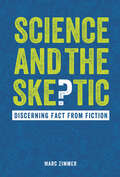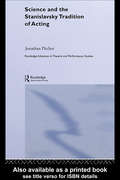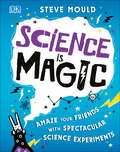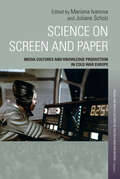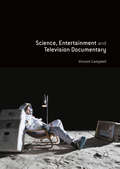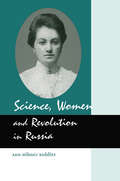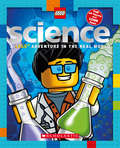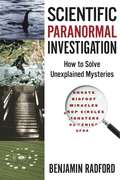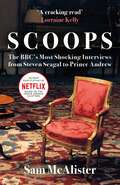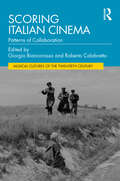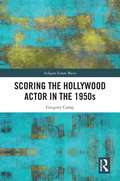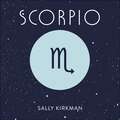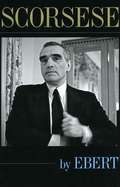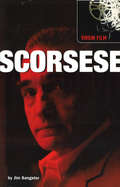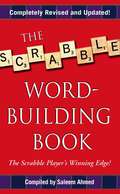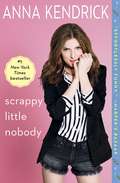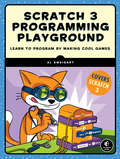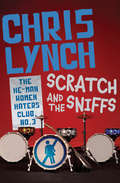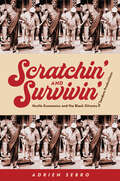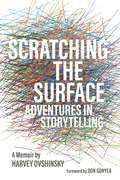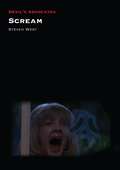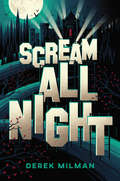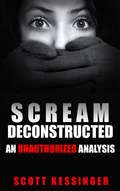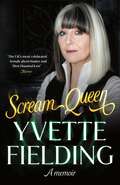- Table View
- List View
Science and the Skeptic: Discerning Fact from Fiction
by Marc ZimmerFake news, pseudoscience, and quackery have become scourges, spreading through society from social media all the way to Congress. The line between entertainment and reality, between fact and fiction, has become blurred. Some of the most crucial issues of our time—climate change, vaccines, and genetically modified organisms—have become prime targets for nefarious disinformation campaigns. Far too many people have become distrustful of real science. Even those who still trust science no longer know what to believe or how to identify the truth. Not only does this result in the devaluation and distrust of real science, but it is also dangerous: people acting based on false information can hurt themselves or those around them. We must equip ourselves with the knowledge and skills to fight back against all this disinformation. InScience and the Skeptic: Discerning Fact from Fiction, you will learn how science is done, from the basic scientific method to the vetting process that scientific papers must go through to become published; how and why some people intentionally or unintentionally spread misinformation; and the dangers in believing and spreading false information. You'll also find twenty easy-to-follow rules for distinguishing fake science from the real deal. Armed with this book, empower yourself with knowledge, learning what information to trust and what to dismiss as deceit. "We're not just fighting an epidemic; we're fighting an infodemic. . . . This is a time for facts, not fear. This is a time for rationality, not rumors. This is a time for solidarity, not stigma."—Tedros Adhanom Ghebreyesus, director-general of the WHO "Our deepest beliefs should help navigate reality, not determine it."—Michael Gersen, The Washington Post "Journalism is very much about trying to simplify and distribute information about what's new and where advances have been made. That's incompatible with the scientific process, which can take a long time to build a body of evidence."—Kelly McBride, Poynter Institute
Science and the Stanislavsky Tradition of Acting (Routledge Advances in Theatre & Performance Studies #Vol. 3)
by Jonathan PitchesProviding new insight into the well-known tradition of acting, Science and the Stanislavsky Tradition of Acting is the first book to contextualise the Stanislavsky tradition with reference to parallel developments in science. Rooted in practice, it presents an alternative perspective based on philosophy, physics, romantic science and theories of industrial management. Working from historical and archive material, as well as practical sources, Jonathan Pitches traces an evolutionary journey of actor training from the roots of the Russian tradition, Konstantin Stanislavsky, to the contemporary Muscovite director, Anatoly Vasiliev. The book explores two key developments that emerge from Stanislavsky’s system – one linear, rational and empirical, while the other is fluid,organic and intuitive. The otherwise highly contrasting acting theories of Vsevolod Meyerhold (biomechanics) and Lee Strasberg (the Method) are dealt with under the banner of the rational or Newtonian paradigm; Michael Chekov’s acting technique and the little known ideas of Anatoly Vasiliev form the centrepiece of the other Romantic, organic strain of practice. Science and the Stanislavsky Tradition of Acting opens up the theatre laboratories of five major practitioners in the twentieth and twenty-first centuries and scrutinises their acting methodologies from a scientific perspective.
Science at the Movies
by Rebecca BoyleHave you ever wondered what movie makers do when they want to know what a black hole looks like? Or how high people could jump on mars? In this interview, Mika McKinnon, movie science adviser, shares what it’s like to do research for movies and television.
Science is Magic: Amaze Your Friends With Spectacular Science Experiments
by Steve MouldPacked with over 40 magical science tricks for kids using simple experiments! Join comedian and author Steve Mould, #1 bestselling author of How to be a Scientist, and learn the secrets behind some of the most famous magic tricks and illusions (and learn some of your own). Learn how to bend water with a balloon, turn water into juice, make a glass beaker disappear in oil, and wow your friends with levitating tinsel! Packed with optical illusions, pranks, and fun facts, this ebook is a must-have for any aspiring scientist or magician (the two aren't as different as you might think)!Each trick is explained using step-by-step photographs, and the science behind each one is showcased clearly and simply. Sprinkled throughout the ebook are profiles of famous magicians and illusionists, such as Harry Houdini and David Blaine, and stories of how they used science to create their most famous tricks.Science is Magic is the perfect addition to any family bookshelf or classroom, putting a fresh spin on science for kids. What's fantastic about this kids&’ activity ebook is that many of the magic tricks or experiments are something you learn to perform on a friend and require practice. Thus, (the genius bit) it&’s not something kids will just do once and then turn the page.Think Magic Is Just An Illusion? Think again! Discover science - REAL magic at your fingertips. Learn some amazing experiments to wow your friends, find out how magicians use science in their most famous tricks, and discover the magic of the world around you. Packed with activities for kids from magic tricks to optical illusions, and peppered with fascinating facts, this educational ebook is a must-have for scientists and magicians alike. Added bonus, each &‘trick&’ or experiment in the ebook uses simple items that can be grabbed from home or a hardware store. Get ready to wow your friends with some cool science-backed magic like:- Magnetic fingers- Reading minds- Color changing potion- Guess the coin- Floating ping pong ball and much more! Add other fun-filled Steve Mould titles in the DK collection to your bookshelves, like How To Be A Scientist and The Bacteria Book.
Science on Screen and Paper: Media Cultures and Knowledge Production in Cold War Europe (Visual and Media Cultures of the Cold War and Beyond #2)
by Mariana Ivanova and Juliane ScholzDuring the Cold War, scientific discoveries were adapted and critiqued in many different forms of media across a divided Europe. Now, more than 30 years since the end of the Cold War, Science on Screen and Paper explores the intersections between scientific research and media by drawing from media history, film studies, and the history of science. From public relations material to educational and science films, from children’s magazines to television broadcasts, the contributions in this collected volume seek to embrace medial differences and focus on intersectional themes and strategies for the representation of science.
Science, Entertainment and Television Documentary
by Vincent CampbellThe shift from traditional documentary to "factual entertainment" television has been the subject of much debate and criticism, particularly with regard to the representation of science. New types of factual programming that combine documentary techniques with those of entertainment formats (such as drama, game-shows and reality TV) have come in for strident criticism. Often featuring spectacular visual effects produced by Computer Generated Imagery--these programmes blur the boundaries between mainstream science and popular beliefs. Through close analysis of programmes across a range of sciences, this book explores these issues to see if criticisms of such hybrid programmes as representing the "rotting carcass of science TV" really are valid. Campbell considers if in fact; when considered in relation to the principles, practices and communication strategies of different sciences; these shows can be seen to offer more complex and rich representations that construct sciences as objects of wonder, awe and the sublime.
Science, Women and Revolution in Russia
by KoblitzWhile the women's movement might seem like a relatively new concept, Russian women of the 1860s deserve to be acknowledged as individuals who changed the direction of science and opened the doors of higher education to women throughout Europe. The 1860's and 1870's witnessed a rise in women's consciousness and the beginnings of the Russian revolutionary movement that saw women pursue and receive doctorates in many areas of science. These same women went on to become some of the brightest in their fields. This book provides a look at Russian women scientists of the 1860's, their personal independence, and technical and literary achievements that made science the popular social movement of the time and changed the face of the Russian intellectual culture.
Science: LEGO Nonfiction
by Penelope Arlon<p>Did you know that the blue whale could blow up 1,250 balloons in a single breath? Or that the Earth's core is as hot as the surface of the sun? <p>Including information about almost every scientific topic in the universe, readers will find out everything they ever wanted to know about fascinating animals, electricity, energy, weather, our galaxy, technology of tomorrow, and so much more. They'll even meet real-life scientists and read all about their exciting work. Complete with hundreds of stunning photographs, fun facts, mini comics, and building ideas, LEGO Science is the perfect book for young readers curious about science. Includes a buildable scientist minifigure! <p>This is a fixed-format ebook, which preserves the design and layout of the original print book.</p>
Scientific Paranormal Investigation: How to Solve Unexplained Mysteries
by Benjamin RadfordThis book is about the scientific methods used to investigate mysteries with real life case studies and how they were solved.
Scoops: Behind the Scenes of the BBC's Most Shocking Interviews
by Sam McAlister&‘Riveting&’ Sunday Telegraph &‘Behind every great interview is a great booker – Sam McAlister is one of the unsung heroes of television news&’ Piers Morgan She is the woman who clinched the 2019 interview with Prince Andrew, described as &‘a plane crashing into an oil tanker, causing a tsunami, triggering a nuclear explosion&’. She is many things beside: the first in her family to go to university; a trained barrister; a single mum; a master of persuasion. In her former BBC colleagues&’ words, she was the &‘booker extraordinaire&’, responsible for many of Newsnight&’s exclusives over the past decade, including Stormy Daniels, Sean Spicer, Brigitte Höss, Steven Seagal, Mel Greig and Julian Assange. After 12 years producing content for Newsnight, McAlister reflects with candour on her experience, sharing not just the secrets of how the best news gets made, but also the changes to the BBC, the future of &‘mainstream media&’ in the age of clickbait and the role of power and privilege in shaping our media landscape. This is a backstage pass to the most unforgettable journalism of our times.
Scoring Italian Cinema: Patterns of Collaboration (Musical Cultures of the Twentieth Century)
by Giorgio Biancorosso and Roberto CalabrettoScoring Italian Cinema: Patterns of Collaboration redefines what it means to write music for the cinema. In eight richly illustrated chapters and a deft introduction, nine leading music and film scholars revisit the great theme of artistic collaboration from a heretofore unexplored angle: the relationship between film directors and composers in the "Long Italian Post-War" (ca. 1945–1975).Spurred by the surfacing of printed and manuscript scores, sketches, drafts, tapes, letters and miscellaneous notes, the authors of Scoring Italian Cinema examine afresh the partnerships between such figures as Federico Fellini and Nino Rota, Michelangelo Antonioni and Giovanni Fusco, Elio Petri and Ennio Morricone, and Dario Argento and Goblin. The volume also brings to light the role of conductors and performers as well as producers and screenwriters in creating the soundtracks of some of the most important films in the history of Italian cinema, including Bitter Rice (Riso Amaro, 1949), La strada (1954) and Salvatore Giuliano (1962). The intrinsically polyvocal nature of the process of completing a score, such as it emerges in the case studies gathered in Scoring Italian Cinema, invites us to rethink of composing for the films as a new kind of expanded, distributed musical practice.Meticulously researched and written in an accessible style, Scoring Italian Cinema will appeal to scholars and practitioners in the fields of music, film and media studies.
Scoring the Hollywood Actor in the 1950s (Ashgate Screen Music Series)
by Gregory CampScoring the Hollywood Actor in the 1950s theorises the connections between film acting and film music using the films of the 1950s as case studies. Closely examining performances of such actors as James Dean, Montgomery Clift, and Marilyn Monroe, and films of directors like Elia Kazan, Douglas Sirk, and Alfred Hitchcock, this volume provides a comprehensive view of how screen performance has been musicalised, including examination of the role of music in relation to the creation of cinematic performances and the perception of an actor’s performance. The book also explores the idea of music as a temporal vector which mirrors the temporal vector of actors’ voices and movements, ultimately demonstrating how acting and music go together to create a forward axis of time in the films of the 1950s. This is a valuable resource for scholars and researchers of musicology, film music and film studies more generally.
Scorpio: The Art of Living Well and Finding Happiness According to Your Star Sign
by Sally KirkmanYou are a Scorpio. You are the change agent and healer of the zodiac.The signs of the zodiac can give us great insight into our day-to-day living as well as the many talents and qualities we possess. But in an increasingly unpredictable world, how can we make sense of them? And what do they mean? This insightful and introductory guide delves deep into your star sign, revealing unique traits and meanings which you didn't know. Along the way, you will discover how your sign defies your compatibility, how to improve your health and what your gifts are. ***The Pocket Astrology series will teach you how to live well and enhance every aspect of your life. From friendship to compatibility, careers to finance, you will discover new elements to your sign and learn about the ancient art of astrology. Other audiobooks in the series include: Aries, Taurus, Gemini, Cancer, Leo, Virgo, Libra, Scorpio, Sagittarius,Capricorn, Aquarius, Pisces(P)2018 Hodder & Stoughton Limited
Scorsese by Ebert
by Roger EbertRoger Ebert wrote the first film review that director Martin Scorsese ever received -- for 1967's "I Call First" -- when both men were just embarking on their careers. Ebert had never been touched by a movie in quite the same way before, and this experience created a lasting bond that made him one of Scorsese's most appreciative and perceptive commentators. "Scorsese by Ebert" offers the first record of America's most respected film critic's engagement with the works of America's greatest living director. The book chronicles every single feature film in Scorsese's considerable oeuvre, from his aforementioned debut to his 2008 release, the Rolling Stones documentary, "Shine a Light". Here Ebert puts Scorsese's career in illuminating perspective, exploring the different phases of his development and the abiding themes (many of which reflect Scorsese's Catholicism) that give his work such complexity and depth. All of Ebert's incisive reviews of Scorsese's individual films are here, of course, but there is much more. In the course of eleven interviews done over almost forty years, the book includes Scorsese's own insights on both his accomplishments and disappointments. One of these interviews, the single longest ever conducted with Scorsese, appears here for the first time. Ebert has also written and included six new re-considerations of the director's less commented upon films, as well as a substantial introduction that provides a framework for understanding both Scorsese and his profound impact on American cinema. As Scorsese himself notes in his foreword to this volume, history is the only critic that counts, but the dialogue from which its judgments arise begins with the kind of emotionally alert, historically informed, and intellectually honest writing that Ebert has collected here in this, the ideal pairing of filmmaker and critic.
Scorsese: Virgin Film
by Jim SangsterMartin Scorsese’s obsession with sin and redemption, conflict and violence runs through much of his work. This essential guide to Scorsese explores his career from his early student works, including It’s Not Just You, Murray!: through his personal examinations of his Italian American heritage in Mean Streets, Italianamerican and Goodfellas: the extreme violence of Raging Bull, Taxi Driver and Cape Fear: and the religious themes – from a director who originally wanted to be a priest – of The Last Temptation of Christ and Kundun. Including all Scorsese’s films up to Gangs of New York, this is a comprehensive study of the work of this widely respected film maker. Also covering his influences, the controversy surrounding his films, exhaustive music lists and long-time collaborations, this is an extensive analysis of the most consistently passionate, committed and inventive film director of the last thirty years.
Scrabble Word-Building Book
by Saleem AhmedWant to outsmart, outwit, and outplay your Scrabble® opponents? Using the completely revised and updated The Scrabble® Word-Building Book, you can! This essential strategy guide shows you how to build on your opponents' words and become a master of this classic game. For novice players and expert wordsmiths alike, this helpful reference includes: A handy list of the 94 two-letter words sure to pile on the points Over 800 three-letter words -- 550 of which can be formed from two-letter words All eight-letter words that can be formed from seven-letter words Every word up to seven letters you can play! To increase your word-building power and achieve the highest score, keep The Scrabble® Word-Building Book at your fingertips -- and beat your opponent every time!
Scrappy Little Nobody
by Anna Kendrick<P>A collection of humorous autobiographical essays by the Academy Award-nominated actress and star of Up in the Air and Pitch Perfect. <P>Even before she made a name for herself on the silver screen starring in films like Pitch Perfect, Up in the Air, Twilight, and Into the Woods, Anna Kendrick was unusually small, weird, and "10 percent defiant." <P> At the ripe age of thirteen, she had already resolved to "keep the crazy inside my head where it belonged. Forever. But here's the thing about crazy: It. Wants. Out." <P>In Scrappy Little Nobody, she invites readers inside her brain, sharing extraordinary and charmingly ordinary stories with candor and winningly wry observations. With her razor-sharp wit, Anna recounts the absurdities she's experienced on her way to and from the heart of pop culture as only she can--from her unusual path to the performing arts (Vanilla Ice and baggy neon pants may have played a role) to her double life as a middle-school student who also starred on Broadway to her initial "dating experiments" (including only liking boys who didn't like her back) to reviewing a binder full of butt doubles to her struggle to live like an adult woman instead of a perpetual "man-child." <P>Enter Anna's world and follow her rise from "scrappy little nobody" to somebody who dazzles on the stage, the screen, and now the page--with an electric, singular voice, at once familiar and surprising, sharp and sweet, funny and serious (well, not that serious). <P><b>A New York Times Bestseller</b>
Scratch 3 Programming Playground: Learn to Program by Making Cool Games
by Al SweigartA project-filled introduction to coding that shows kids how to build programs by making cool games. Scratch, the colorful drag-and-drop programming language, is used by millions of first-time learners worldwide. Scratch 3 features an updated interface, new programming blocks, and the ability to run on tablets and smartphones, so you can learn how to code on the go.In Scratch 3 Programming Playground, you'll learn to code by making cool games. Get ready to destroy asteroids, shoot hoops, and slice and dice fruit! Each game includes easy-to-follow instructions with full-color images, review questions, and creative coding challenges to make the game your own. Want to add more levels or a cheat code? No problem, just write some code.You'll learn to make games like: • Maze Runner: escape the maze! • Snaaaaaake: gobble apples and avoid your own tail • Asteroid Breaker: smash space rocks • Fruit Slicer: a Fruit Ninja clone • Brick Breaker: a remake of Breakout, the brick-breaking classic • Platformer: a game inspired by Super Mario BrosLearning how to program shouldn't be dry and dreary. With Scratch 3 Programming Playground, you'll make a game of it!Covers: Scratch 3
Scratch and the Sniffs (The He-Man Women Haters Club #3)
by Chris LynchThe He-Man Women Haters are rocking out in a punk band!With Wolfgang newly installed as their leader, the He-Men recruit club members Scratch and Cecil, and form a garage punk band. In no time at all, Scratch and the Sniffs is born—the problem is, no one can actually play an instrument. But lack of talent doesn&’t stop the He-Man Women Haters Club from chasing stardom—or at least a few bucks!
Scratchin' and Survivin': Hustle Economics and the Black Sitcoms of Tandem Productions
by Adrien SebroThe 1970s was a golden age for representations of African American life on TV sitcoms: Sanford & Son, Good Times, The Jeffersons. Surprisingly, nearly all the decade’s notable Black sitcoms were made by a single company, Tandem Productions. Founded by two white men, the successful team behind All in the Family, writer Norman Lear and director Bud Yorkin, Tandem gave unprecedented opportunities to Black actors, writers, and producers to break into the television industry. However, these Black auteurs also struggled to get the economic privileges and creative autonomy regularly granted to their white counterparts. Scratchin’ and Survivin’ discovers surprising parallels between the behind-the-scenes drama at Tandem and the plotlines that aired on their sitcoms, as both real and fictional African Americans devised various strategies for getting their fair share out of systems prone to exploiting their labor. The media scholar Adrien Sebro describes these tactics as a form of “hustle economics,” and he pays special attention to the ways that Black women—including actresses like LaWanda Page, Isabel Sanford, and Esther Rolle—had to hustle for recognition. Exploring Tandem’s complex legacy, including its hit racially mixed sitcom Diff’rent Strokes, he showcases the Black talent whose creative agency and labor resilience helped to transform the television industry.
Scratching the Surface: Adventures in Storytelling (Painted Turtle)
by Harvey OvshinskyScratching the Surface: Adventures in Storytelling is a deeply personal and intimate memoir told through the lens of Harvey Ovshinsky’s lifetime of adventures as an urban enthusiast. He was only seventeen when he started The Fifth Estate, one of the country’s oldest underground newspapers. Five years later, he became one of the country’s youngest news directors in commercial radio at WABX-FM, Detroit’s notorious progressive rock station. Both jobs placed Ovshinsky directly in the bullseye of the nation’s tumultuous counterculture of the 1960s and 70s. When he became a documentary director, Ovshinsky’s dispatches from his hometown were awarded broadcasting’s highest honors, including a national Emmy, a Peabody, and the American Film Institute’s Robert M. Bennett Award for Excellence. But this memoir is more than a boastful trip down memory lane. It also doubles as a survival guide and an instruction manual that speaks not only to the nature of and need for storytelling but also and equally important, the pivotal role the twin powers of endurance and resilience play in the creative process. You don’t have to be a writer, an artist, or even especially creative to take the plunge, Ovshinsky reminds his readers. "You just have to feel strongly about something or have something you need to get off your chest. And then find the courage to scratch your own surface and share your good stuff with others." Above all, Ovshinsky is an educator, known for his passionate support of and commitment to mentoring the next generation of urban storytellers. When he wasn’t teaching screenwriting and documentary production in his popular workshops and support groups, he taught undergraduate and graduate students at Detroit’s College for Creative Studies, Wayne State University, Madonna University, and Washtenaw Community College. "The thing about Harvey," a colleague recalls in Scratching the Surface, "is that he treats his students like professionals and not like newbies at all. His approach is to, in a very supportive and non-threatening way, combine both introductory and advanced storytelling in one fell swoop."
Scream (Devil's Advocates)
by Steven WestWes Craven's Scream (1996) emerged at the point where the early eighties American slasher cycle had effectively morphed into the post-Fatal Attraction trend for Hollywood thrillers that incorporated key slasher movie tropes. Scream emerged as a spiritual successor to Wes Craven's unpopular but critically praised previous film New Nightmare (1994), which evolved from his frustration at having lost creative control over his most popular creation, Freddy Krueger, and rebirthed the character in a postmodern context. Scream appropriates many of the concepts, conceits, and in-jokes inherent in New Nightmare, albeit in a much more commercial context that did not alienate teenage audiences who were not around to see the movies that were being referenced. This Devil's Advocate offers a full exploration of Scream, including its structure, its many reference points (such as the prominent use of Halloween as a kind of sacred text), its marketing ("the new thriller from Wes Craven" – not a horror film), and legacy for horror cinema in the new millennium.
Scream All Night
by Derek MilmanA darkly hilarious contemporary realistic young adult novel about growing up and finding your place in the world, perfect for fans of Me and Earl and the Dying Girl and Running With Scissors. Goodreads The Hottest YA Books of Summer * B&N Teen Blog Most Anticipated YA Debuts of 2018 * Buzzfeed 27 YA Books You’ll Want to Devour By the Pool This Summer *DARIO HEYWARD KNOWS ONE THING: He’s never going back to Moldavia Studios, the iconic castle that served as the set, studio, and home to the cast and crew of dozens of cult classic B-horror movies. It’s been three years since Dario’s even seen the place, after getting legally emancipated from his father, the infamous director of Moldavia’s creature features.But then Dario’s brother invites him home to a mysterious ceremony involving his father and a tribute to his first film—The Curse of the Mummy’s Tongue. Dario swears his homecoming will be a one-time visit. A way for him to get closure on his past—and reunite with Hayley, his first love and costar of Zombie Children of the Harvest Sun, a production fraught with real-life tragedy—and say good-bye for good. But the unthinkable happens—Dario gets sucked back into the twisted world of Moldavia and the horrors, both real and imagined, he’s left there.With only months to rescue the sinking studio and everyone who has built their lives there, Dario must confront the demons of his past—and the uncertainties of his future. But can he escape the place that’s haunted him his whole life?
Scream Deconstructed: An Unauthorized Analysis
by Scott KessingerSomeone's taken their love of Scream one step too far. . . and written a book about it! Having earned the respect and accolades of critics and audiences, generated more than half a billion dollars in revenue, and inspired a gaggle of imitators, it's safe to say Scream is millions of people's favorite scary movie. While the Scream films have scared and entertained moviegoers worldwide, they've also invited us to closer examine the movies we watch: to deconstruct them. This book aims to do just that. Scream Deconstructed: An Unauthorized Analysis puts all four Scream movies under the knife to examine the meaning, themes and philosophy of the movie series that brought horror back from the dead by breaking all the rules. Take a close look into the heart of this pop culture phenomenon and what its characters - including Sidney, Gale, Dewey, and each film's killer - represent. Find out what reality, film, fantasy, and sex have to do with it all. Scream Deconstructed is sure to please any fan of Scream, horror, or film in general.
Scream Queen: A memoir
by Yvette FieldingSeances, Ouija boards, table tipping, knocking phenomena - all in a day's work for the First Lady of the Paranormal. Yvette Fielding has nerves of steel when facing down her tormentors in the spirit world. Her living-world personal story also reveals a woman of courage and determination, who built success from nothing, following her passion and lifelong curiosity in search of answers to the unexplained.Yvette was always fascinated with the afterlife, and Buddhist meditation practice opened her up to any spirit who wanted to contact her. This manifested in her first family home. Their TV would switch itself on, and kitchen cupboards would open and close all by themselves. When alone there, Yvette would arm herself with a Samurai sword to confront her unseen visitors.But it was a harrowing investigation of eerie 800 year-old Michelham Priory where Yvette’s life-changing Most Haunted adventure began, and still continues many terrifying quests and over twenty years later.Here you’ll walk with Yvette where others fear to tread through chills of the supernatural kind, and she also talks with candid honesty of occasional cold spots she’s encountered in human form. But through all the drops in temperature, the nation’s most celebrated ghost hunter radiates warmth and humour and it’s a joy to accompany her on her incredible journey from child TV star to Most Haunted icon.Beware sceptics: the Scream Queen's story could change your world view for ever.
